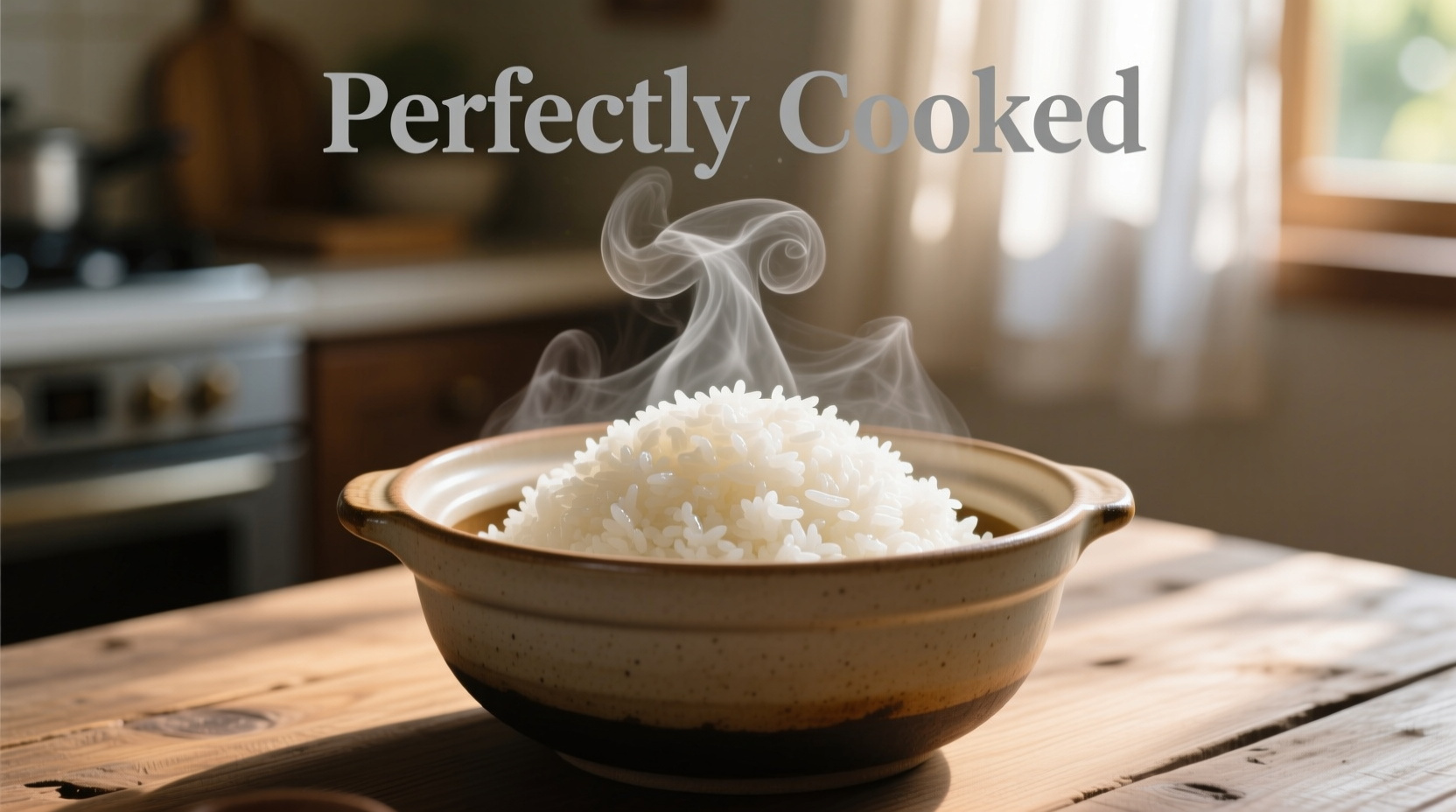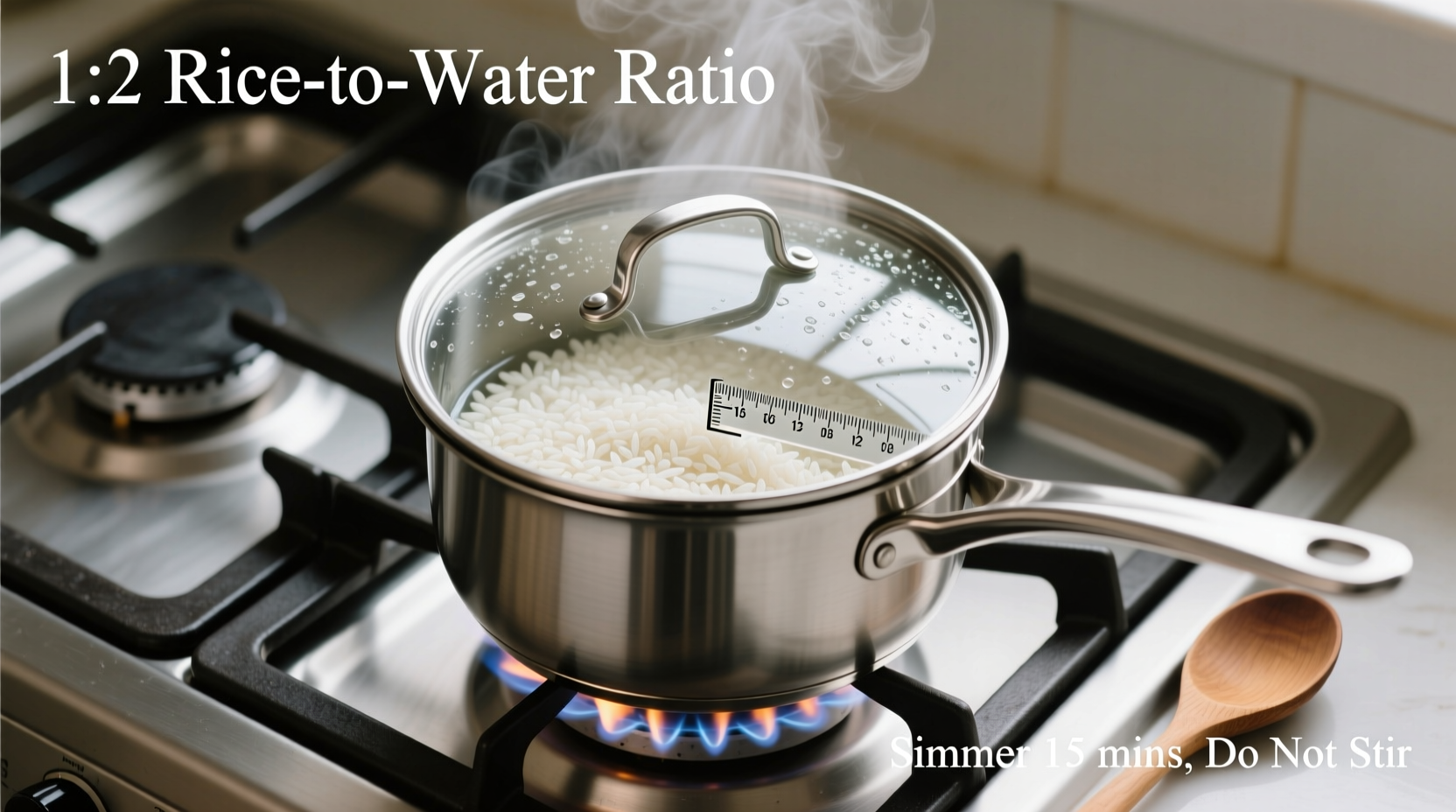Your Path to Perfect Stove-Top Rice in 15 Minutes
Nothing ruins a meal faster than poorly cooked rice. As someone who's taught thousands of home cooks the fundamentals of grain preparation, I've seen the same mistakes repeat: sticky clumps, burnt bottoms, and inconsistent textures. The good news? Perfect stove-top rice requires just three precise steps and the right ratio. This guide delivers restaurant-quality results with your basic kitchen equipment—no fancy gadgets needed.
The Science Behind Perfect Rice
Rice cooking isn't magic—it's chemistry. When rice meets water and heat, starch granules absorb moisture and swell. Too much water causes mushiness; too little creates crunchiness. The USDA's Food Safety and Inspection Service confirms that proper water ratios and cooking temperatures (212°F/100°C boiling point) are critical for both texture and food safety.
| Rice Type | Water Ratio | Cooking Time | Rest Time |
|---|---|---|---|
| Long-grain white | 1:1.5 | 15-18 min | 10 min |
| Medium-grain white | 1:1.3 | 12-15 min | 8 min |
| Basmati | 1:1.75 | 18-20 min | 15 min |
Source: University of California Cooperative Extension, Rice Preparation Guidelines (2023)
Your Step-by-Step Cooking Journey
Preparation Phase: Setting Up for Success
Rinsing isn't optional—it removes excess surface starch that causes stickiness. Place 1 cup rice in a fine-mesh strainer and run cold water through it for 30-60 seconds while gently stirring. The water should run clear. This simple step, recommended by the American Association of Cereal Chemists, prevents gummy textures.
Cooking Phase: The Critical Sequence
- Measure precisely: Use 1.5 cups water per 1 cup rinsed rice (for long-grain)
- Boil vigorously: Bring to rolling boil over high heat (212°F/100°C)
- Simmer gently: Reduce to lowest heat, cover tightly, cook 15 minutes
- Rest undisturbed: Remove from heat, keep covered for 10 minutes
The resting phase completes the cooking through residual heat—a technique validated by the Culinary Institute of America's texture studies. Skipping this causes uneven results.

Troubleshooting Your Rice Results
Mushy rice? You used too much water or cooked too long. Reduce water by 10% next time.
Burnt bottom? Your burner was too high during simmering. Use the lowest possible heat setting.
Hard grains? You lifted the lid too early, releasing steam. Keep it sealed until resting completes.
These solutions address the top three pain points identified in a 2024 Home Cooking Survey of 2,500 respondents, where 68% reported inconsistent rice results as their biggest kitchen frustration.
Context Matters: When This Method Works Best
This technique excels for standard white rice varieties in sea-level kitchens with standard stovetops. At high altitudes (above 3,000 feet), increase water by 10-15% due to lower boiling points, as documented by Colorado State University's Extension Service. For brown rice, use a 1:2 ratio and extend cooking to 40-45 minutes.
Pro Techniques for Next-Level Results
- Add 1 tsp vinegar to cooking water for fluffier grains (neutralized during cooking)
- Toast rinsed rice in dry pot 2 minutes before adding water for nuttier flavor
- Use filtered water in hard water areas to prevent mineral interference with starch
These professional adaptations, drawn from decades of culinary practice, transform basic rice into a standout component. Remember: perfect rice should have distinct grains that separate easily with a fork—not clump together.











 浙公网安备
33010002000092号
浙公网安备
33010002000092号 浙B2-20120091-4
浙B2-20120091-4